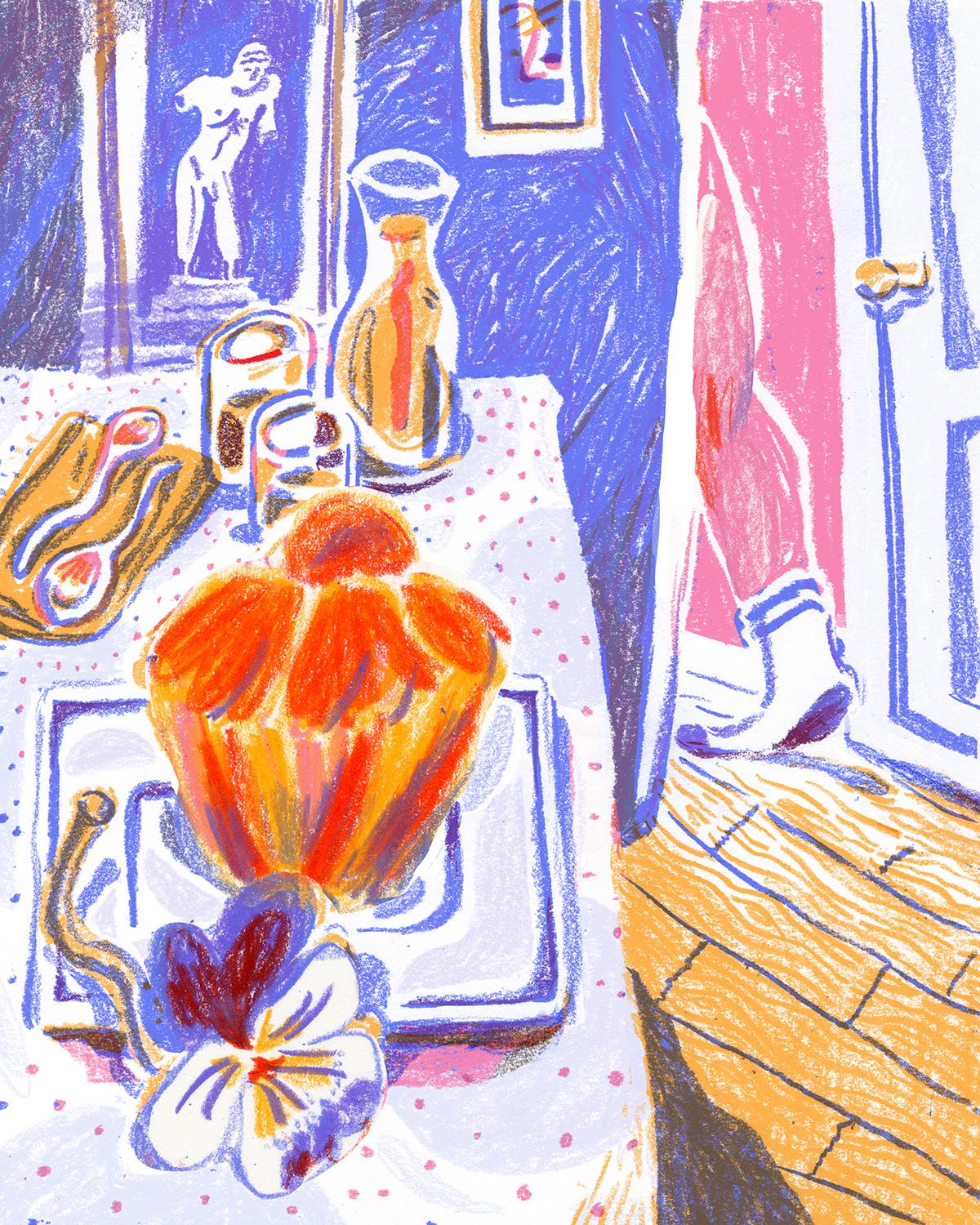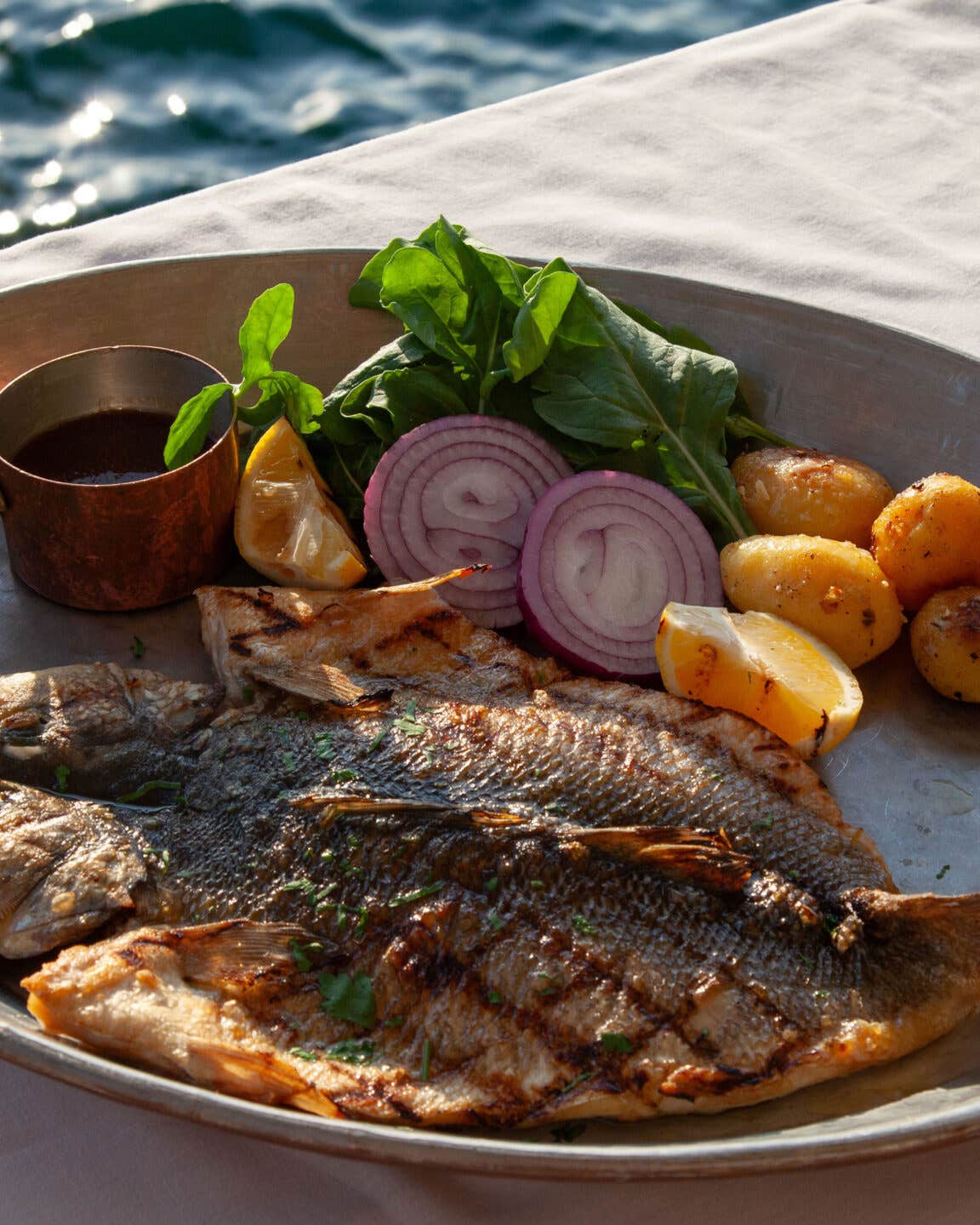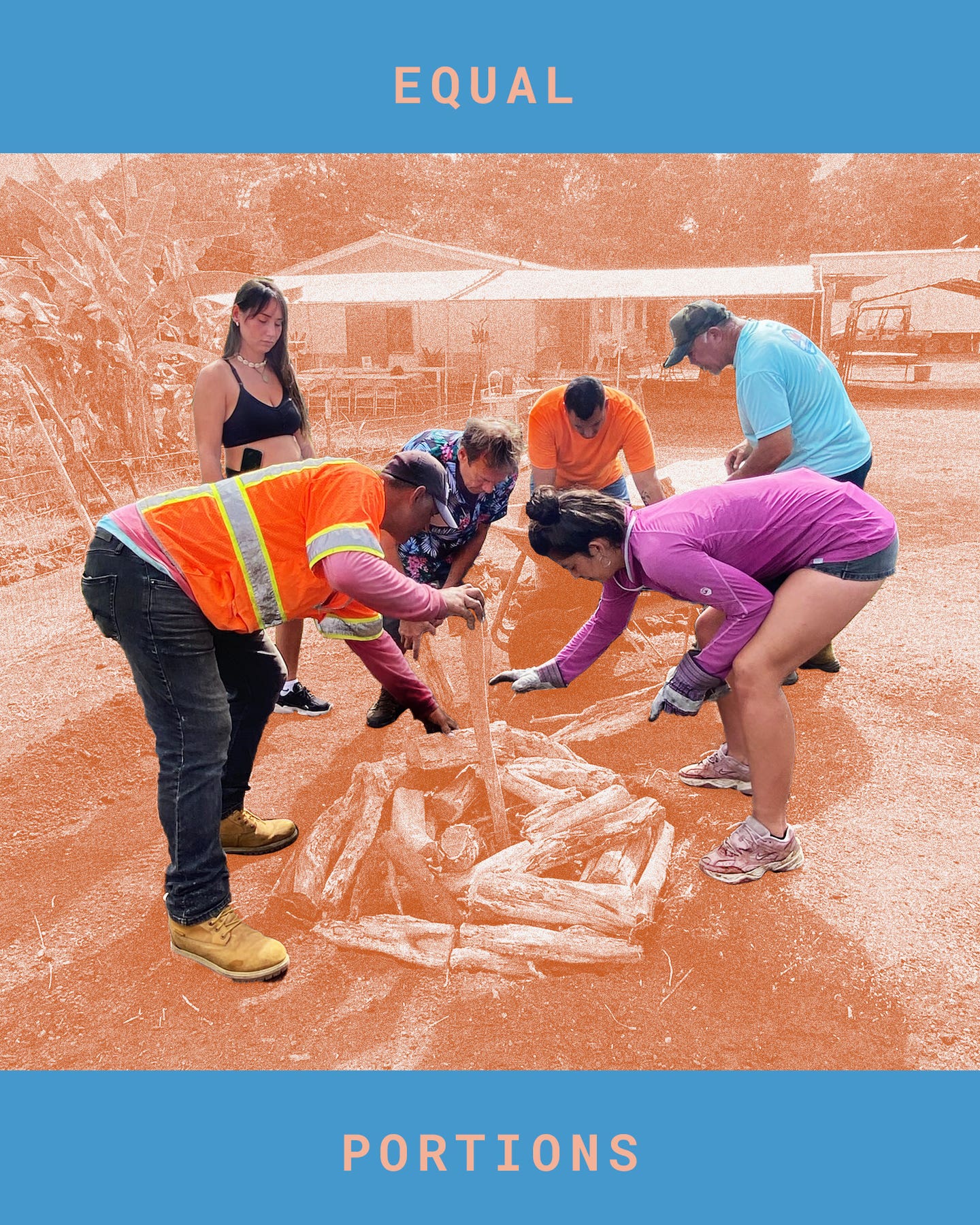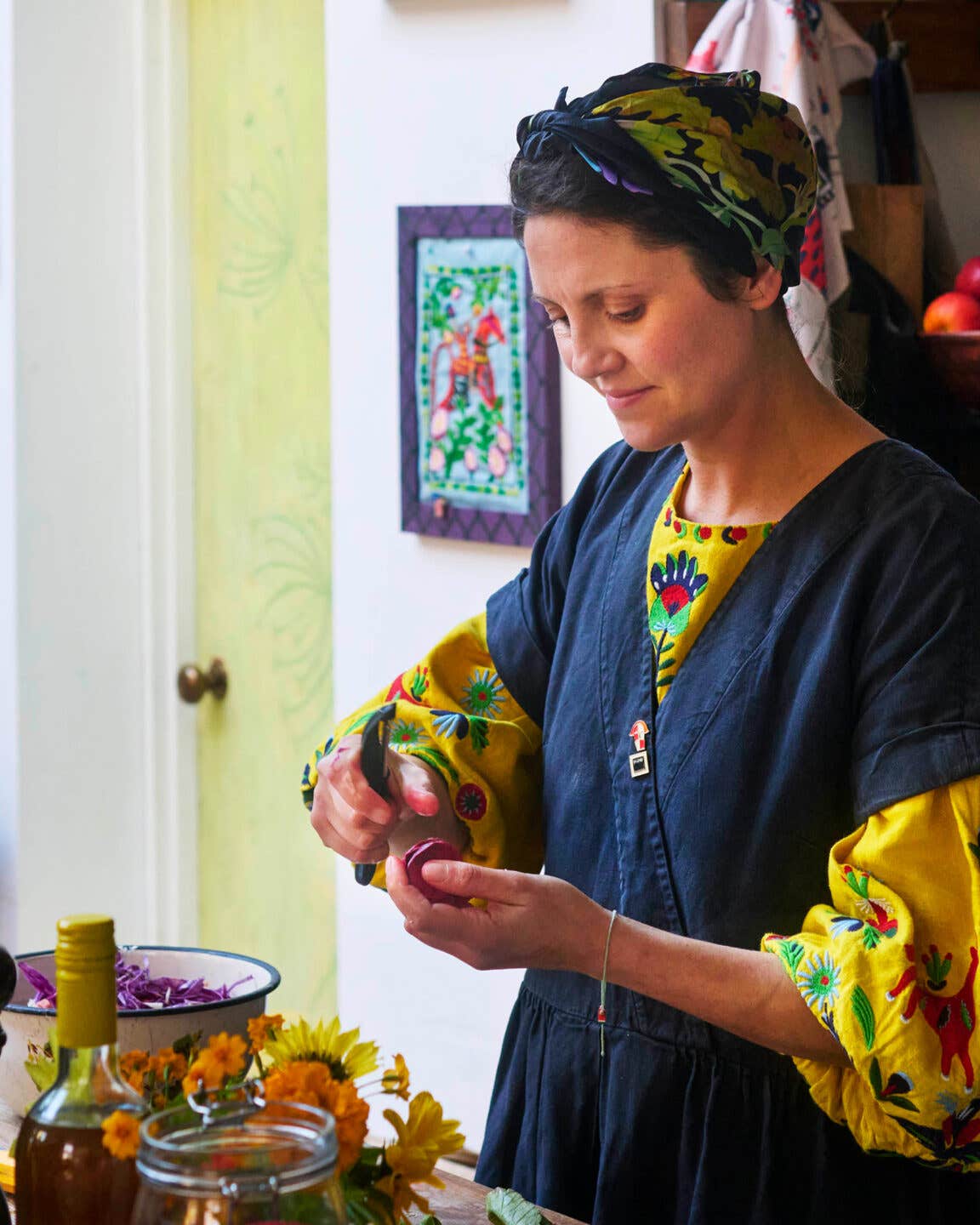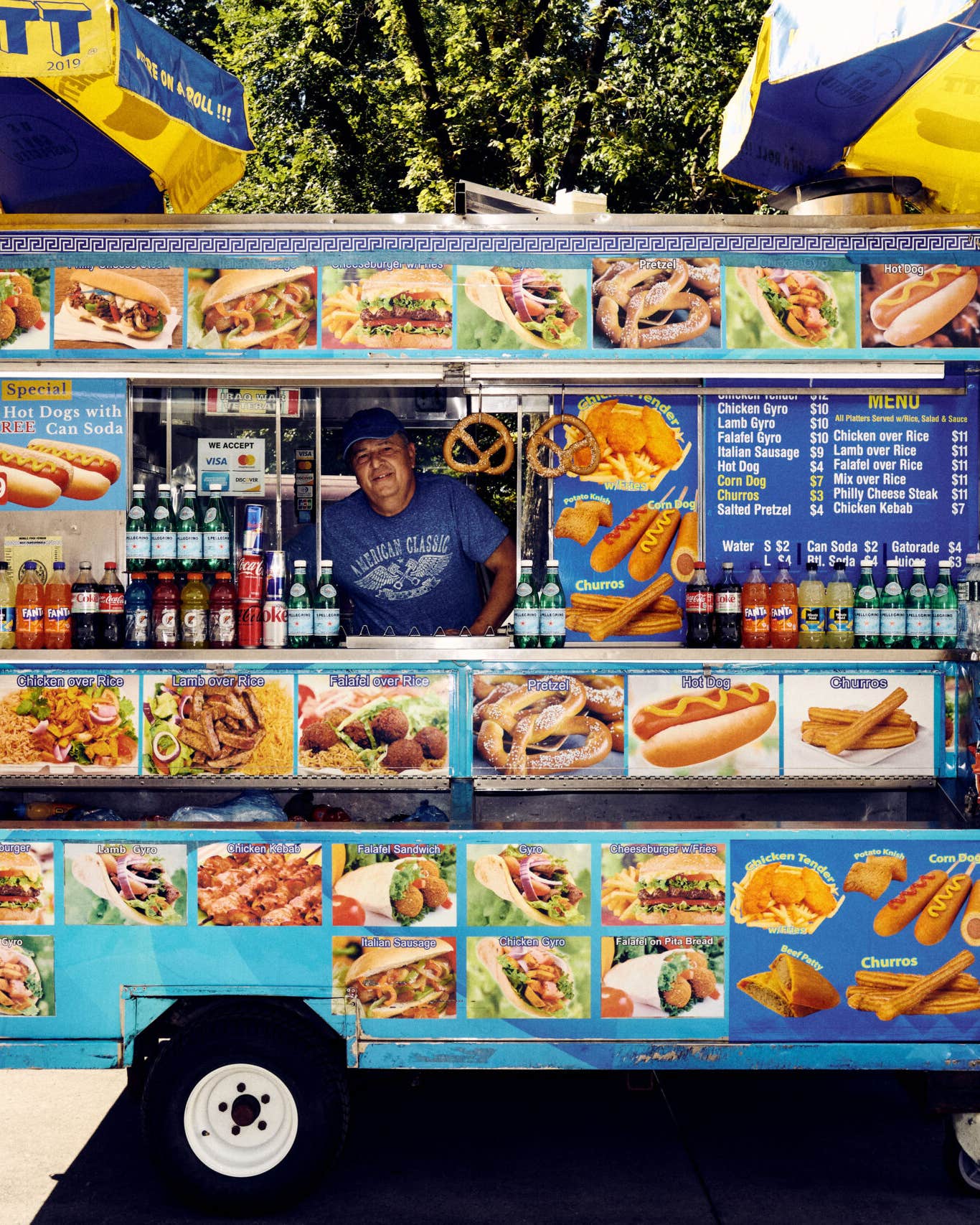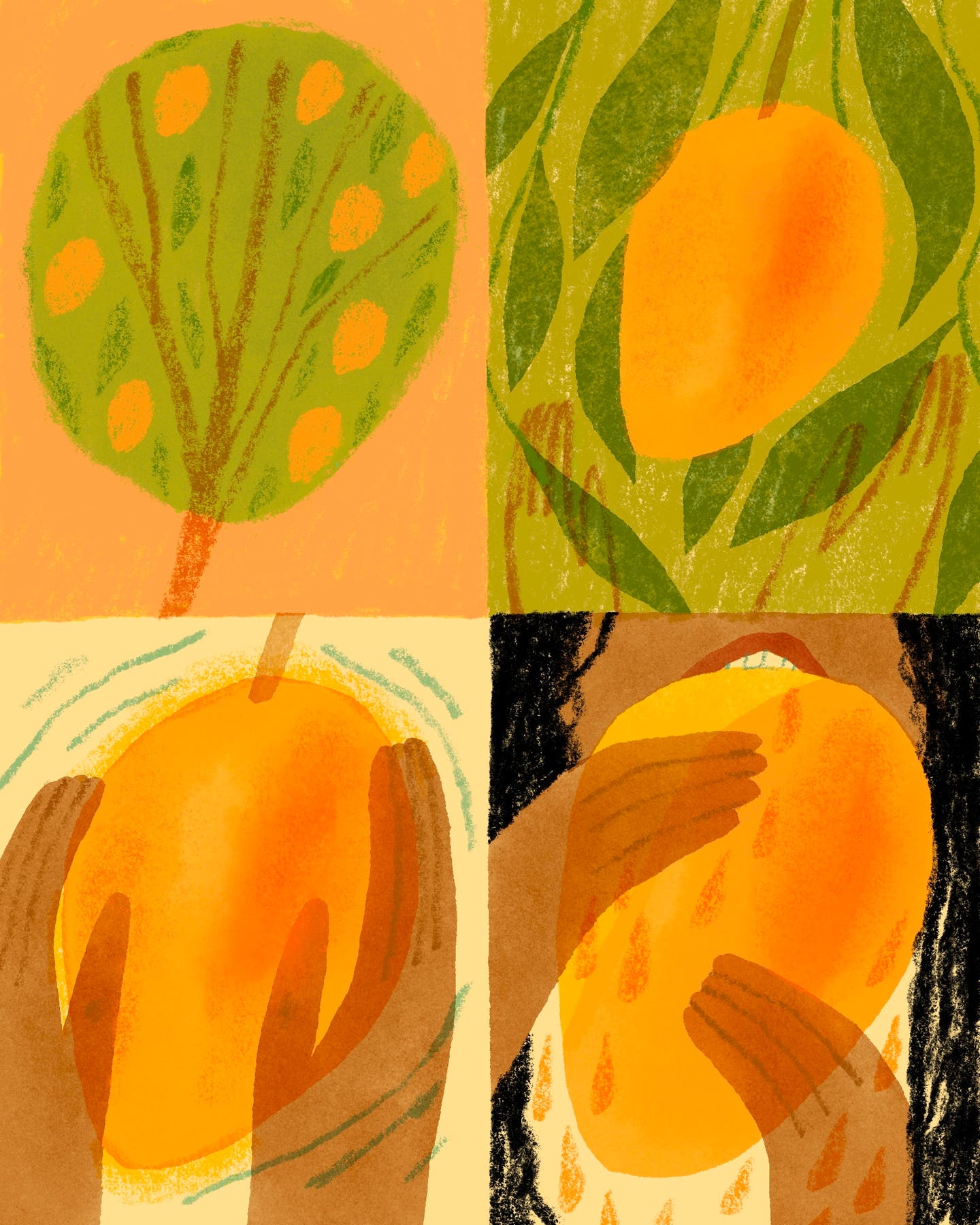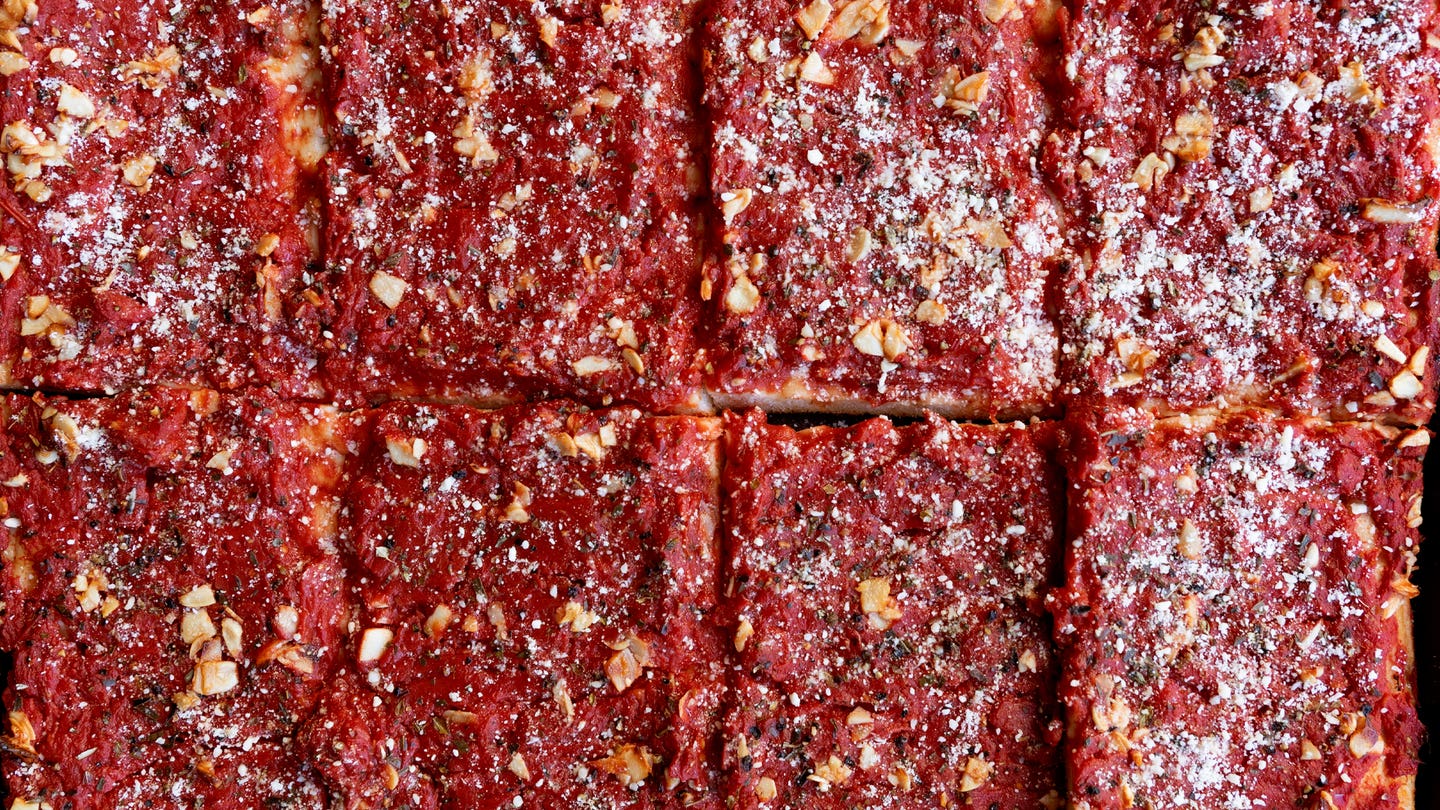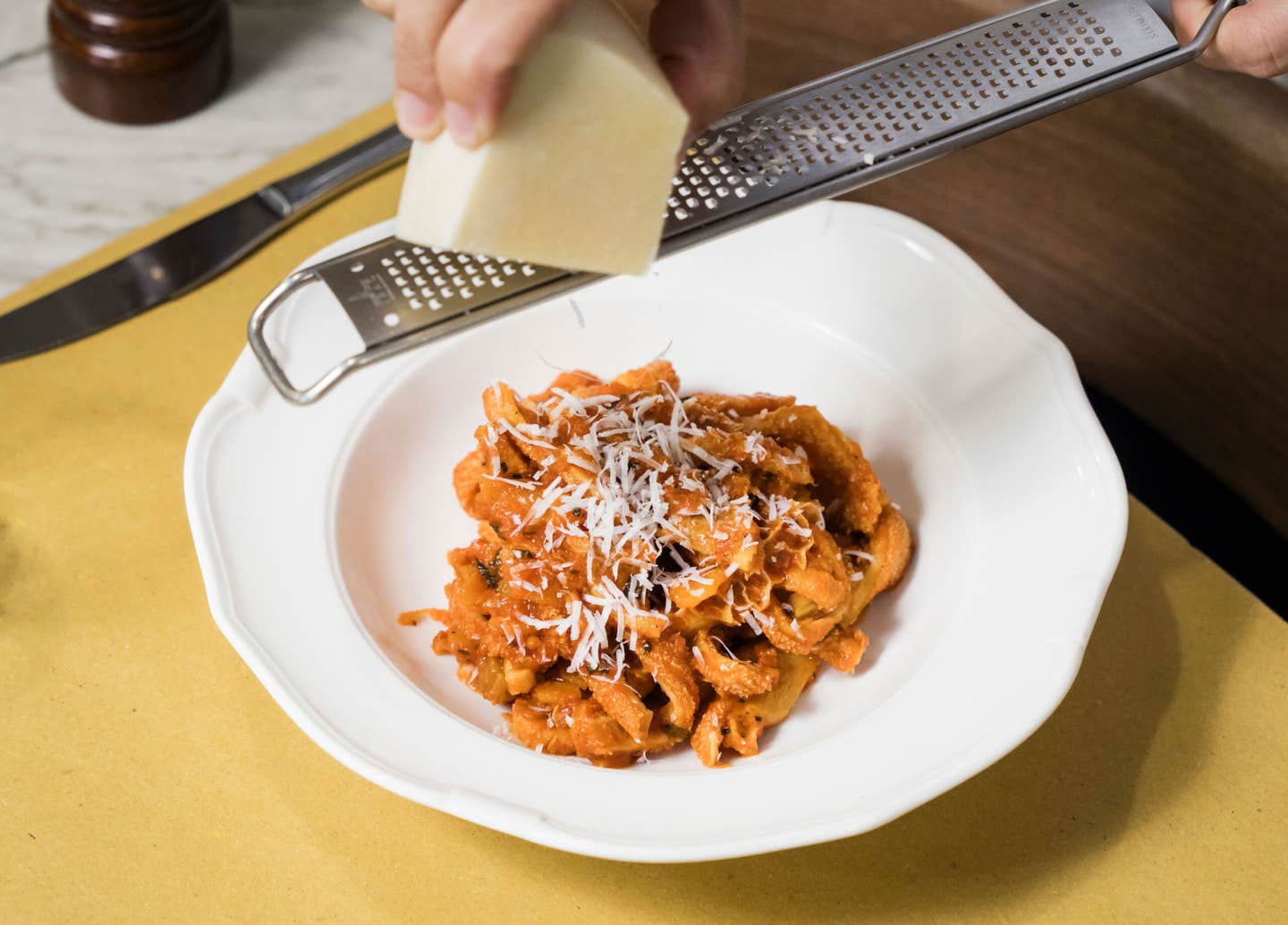
14 Dishes Everyone Should Eat in Rome
Local food phenom Katie Parla shares her top spots to try carbonara, pizza rossa, crispy rice fritters, and more.
People have been writing about Rome for more than two millennia, which means visitors have wanted to know what to eat there for at least as long. I’ve only been at it for 22 years, but in that time I’ve devoted my life to Roman food through writing cookbooks, hosting and participating in TV shows, podcasting, and leading small-group food tours.
Things have come a long way from the stuffed sow’s womb and flamingo tongues that graced ancient noble tables; indeed, many of the dishes we eat in Rome today developed during the 20th century as a reflection of local agriculture, migration, and national unification. Even so, many quintessential cucina romana ingredients—like sheep’s milk cheese, lamb, guanciale, offal, and minty herbs—were beloved by the ancients, even if they’re used in different ways today. Staples such as tomatoes, black pepper (then a fabulously expensive spice), and dried pasta, on the other hand, are completely modern.
What follows is by no means an exhaustive list of Roman specialties. That would fill an entire volume. (Take it from me—I’m currently writing a cookbook on the subject, dropping this fall.) To eat like a Roman, you’ll want to hit up street food spots for trapizzini, bakeries for pizza cut from sheet pans, and trattorias for offal dishes like rigatoni con la pajata and coratella. Whether you’ve been to Rome a dozen times or are brand new to the city, these are the essential dishes to keep on your radar—and where to eat them.
Trapizzino con pollo alla cacciatora at Trapizzino
Via Giovanni Giolitti, 36 and multiple locations
+39 06 4620 2900
Trapizzino is Roman street food, glowed up. It turns traditional cucina romana dishes into a handheld snack by piling them into a triangle of slow-fermented pizza bianca. I love the chicken cacciatore: dark meat stewed until meltingly tender with white wine, vinegar, and aromatics, then stuffed into the crispy-chewy bread pocket. Invented by pizzaiolo Stefano Callegari back in 2008, the trapizzino is a fast food that bridges culinary heritage and contemporary convenience. Eat it hot, standing up—ideally wearing a patterned shirt.
Coratella d’agnello at Trecca
Via Alessandro Severo, 220
+39 06 8865 0867
At this trendy restaurant in Rome’s San Paolo district, lamb takes center stage in a variety of bold, old-school preparations, but the coratella—a stew made with heart, lungs, and liver—best represents Rome’s nose-to-tail cooking philosophy. Scrawled almost daily on the chalkboard menu, the dish includes artichokes when in season—a spring treat. If offal isn’t your thing, try other lamb delights such as abbacchio a scottadito (grilled chops), agnello fritto (fried lamb ribs), or fettuccine al ragù d’agnello (hand-rolled pasta topped with slow-braised lamb).
Supplì Classici at Supplizio
Via dei Banchi Vecchi 143
+39 06 8987 1920
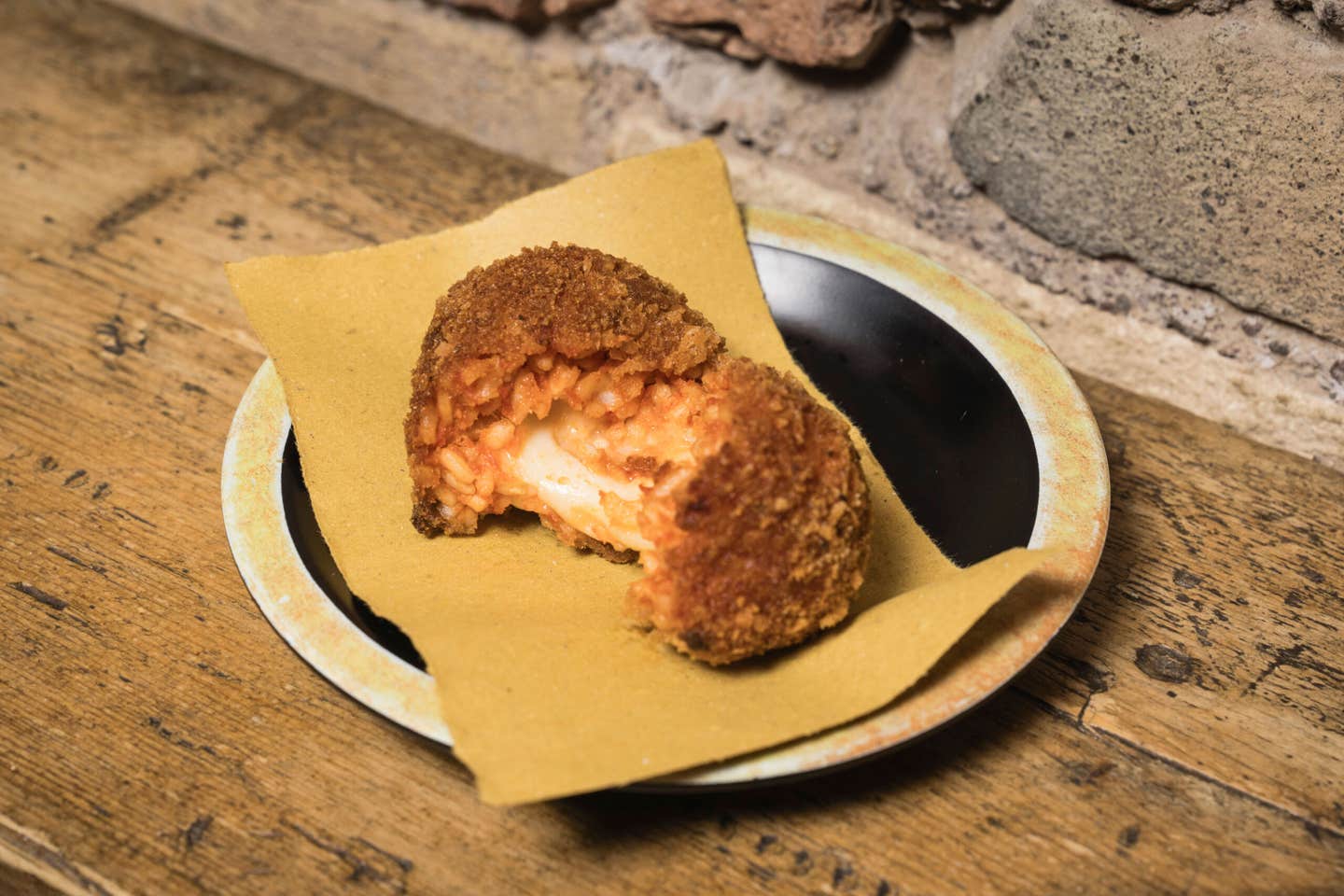
Supplì are fried rice croquettes shaped like goose eggs. Call them arancine at your own risk—those are the spherical or pyramidal rice balls popular in Italy’s south. Classic supplì start with a beefy risotto, sometimes enriched with bits of sausage or chicken innards. The cooked rice is formed around a piece of mozzarella, then breaded and fried. When made properly, you’ll get a satisfying cheese pull upon digging in. That’s how the dish earned the nickname supplì al telefono, a throwback to when phones had cords. Chef Arcangelo Dandini has mastered every aspect of classic supplì–the rice is perfectly al dente and appropriately seasoned, the breaded exterior is crisp and golden, and the cheese pull is a guarantee.
Pizza Rossa at Panificio Bonci
Via Trionfale 36
+39 06 3973 4457
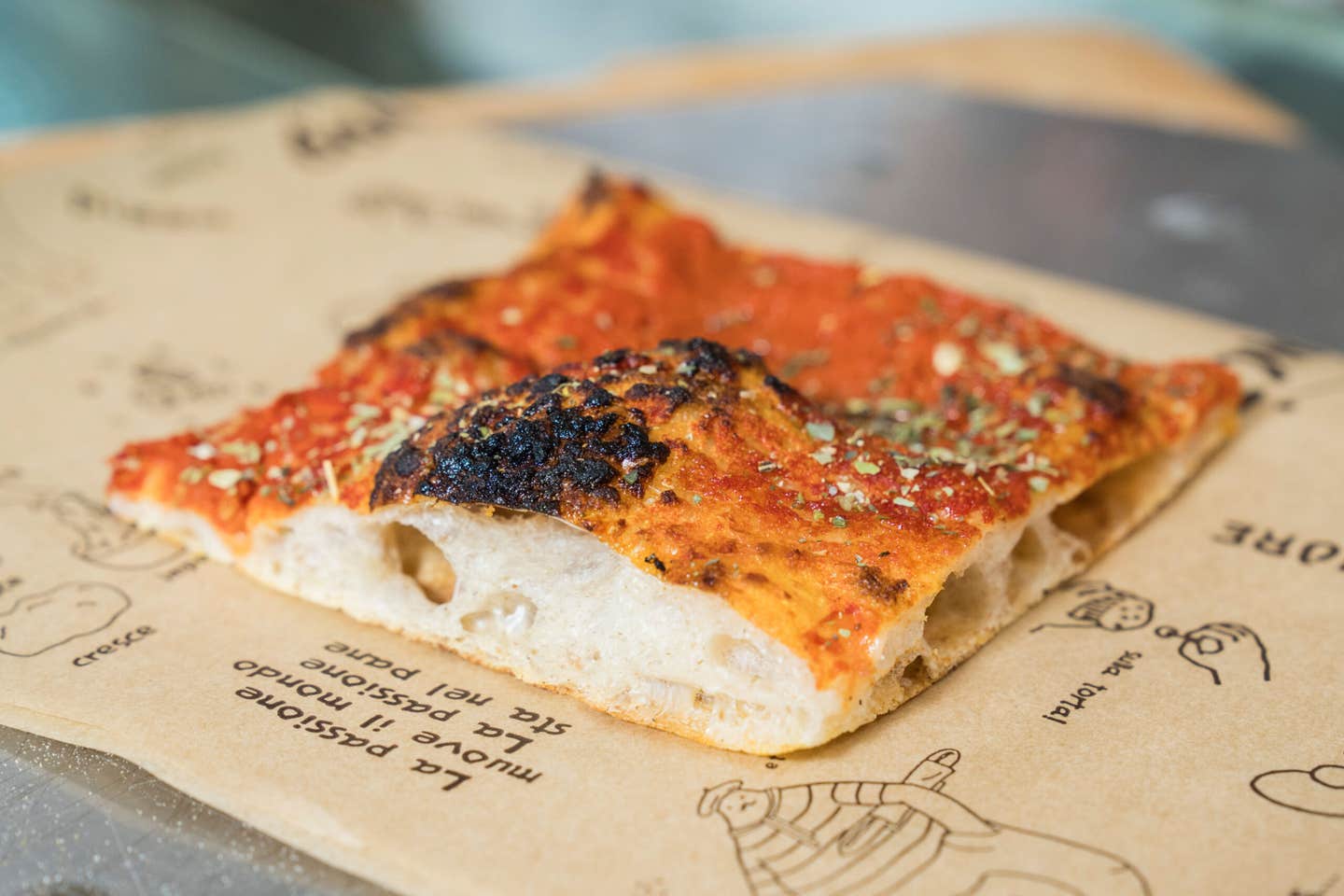
“Red pizza” is sold by weight at bakeries and slice joints across the city. The cheeseless classic, which can be breakfast or a snack, consists of lightly seasoned raw tomato sauce brushed over shaped dough. Next, it’s baked until the crust is crispy and chewy and the tomato has concentrated slightly without losing its acidic edge. At Panificio Bonci, famed baker and Chef’s Table protagonist Gabriele Bonci demonstrates his pizza rossa prowess in an ethereal version that adds a hint of whole-wheat flour for nuttiness and complexity. Each slice is finished with a glug of floral extra-virgin olive oil that pools in the crannies of the dimpled dough. For variety's sake, consider also trying the pizza with potatoes and mozzarella, another local classic that's a glorious celebration of carbs.
Minestra di Broccoli e Arzilla at Cesare al Pellegrino
Via del Pellegrino 117
+39 06 6880 1978
Roman fish mongers are known for their elaborate displays, but perhaps no specimen is as eye-catching as the bony, cartilaginous, and downright prehistoric-looking skate. In spite of its waning popularity, the ray subspecies remains a fixture on traditional tables, a reminder of the Catholic custom of abstaining from eating meat on Fridays and preparing fish dishes instead. Romans aren’t as devout as they used to be but still adhere to this tradition. During the cool months, when romanesco is in season, Leonardo Vignoli of Cesare al Pellegrino makes minestra di broccoli e arzilla on Fridays. The brothy soup is made with deboned skate, the knobby cauliflower-like romanesco, and a hint of tomato. It’s one of the few dishes anywhere in Italy that calls for broken spaghetti, added to the broth for texture and heft.
Tonnarelli Cacio e Pepe at Baccano
Via delle Muratte 23
+39 06 6994 1166
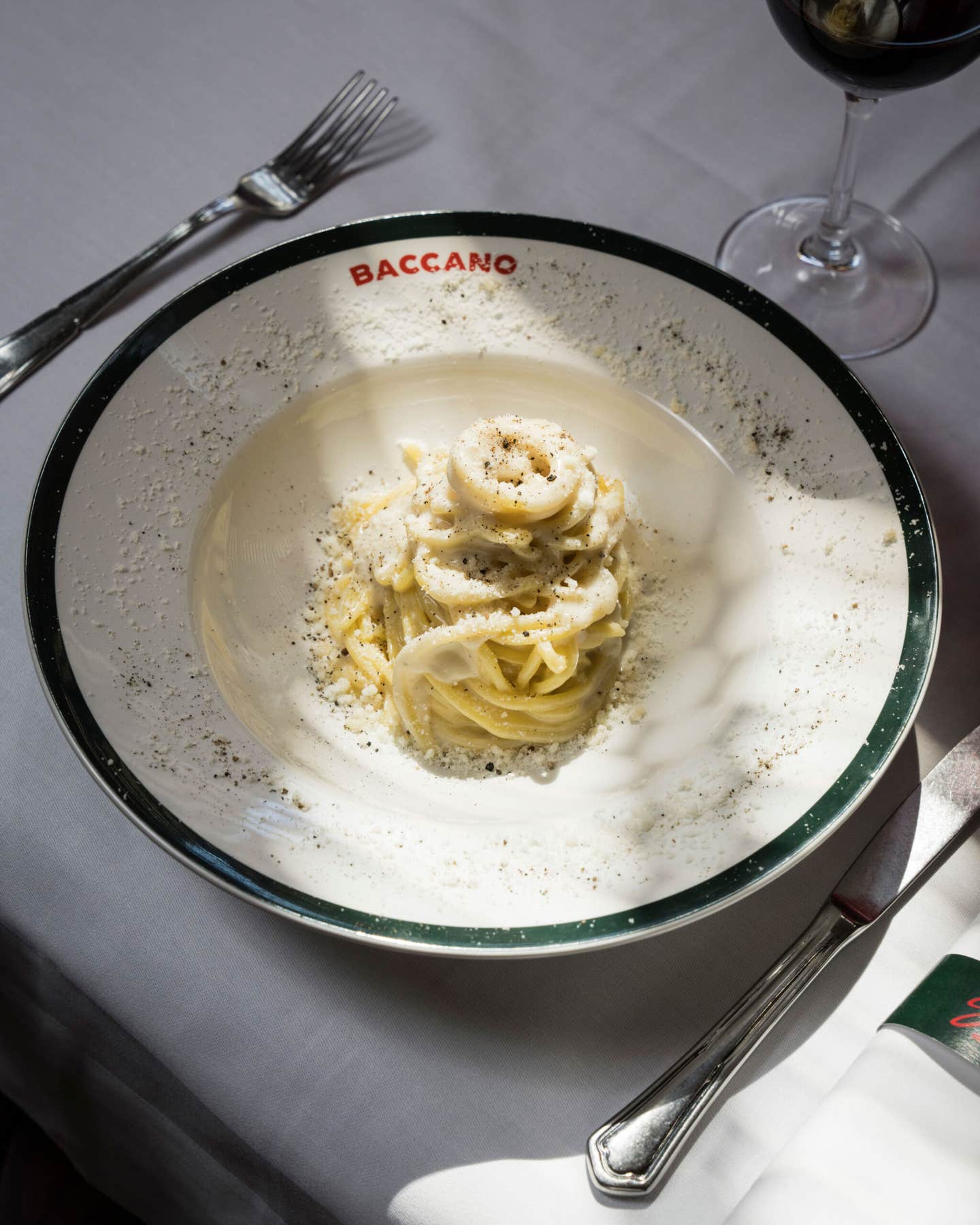
Cacio e pepe, literally cheese and pepper, has become a ubiquitous flavor combination in Rome, appearing as a pizza topping, supplì filling, and potato croquette flavoring. The trend has hit American shores, too, where chefs are cacio e pepe-ing everything these days. The dish’s origins, however, are as a Roman pasta sauce featuring Pecorino Romano and black pepper combined with a little water and tossed with long strands of pasta, typically tonnarelli (fresh, squared-off spaghetti). Many ristoranti have taken to combining Pecorino Romano with cow’s milk Parmigiano-Reggiano to temper the intense saltiness of the former, but at Baccano, chef Nabil Hadj Hassen keeps things old-school with just Pecorino. His other secret: freshly ground Sarawak black pepper from Malaysia, which offers piquant fruitiness and woodsy complexity, instead of the usual one-note pepper of unknown provenance.
Rigatoni alla Gricia, Spaghettoni alla Carbonara, and Bombolotti all'Amatriciana at Salumeria Roscioli
Via dei Giubbonari 34
+39 06 687 5287
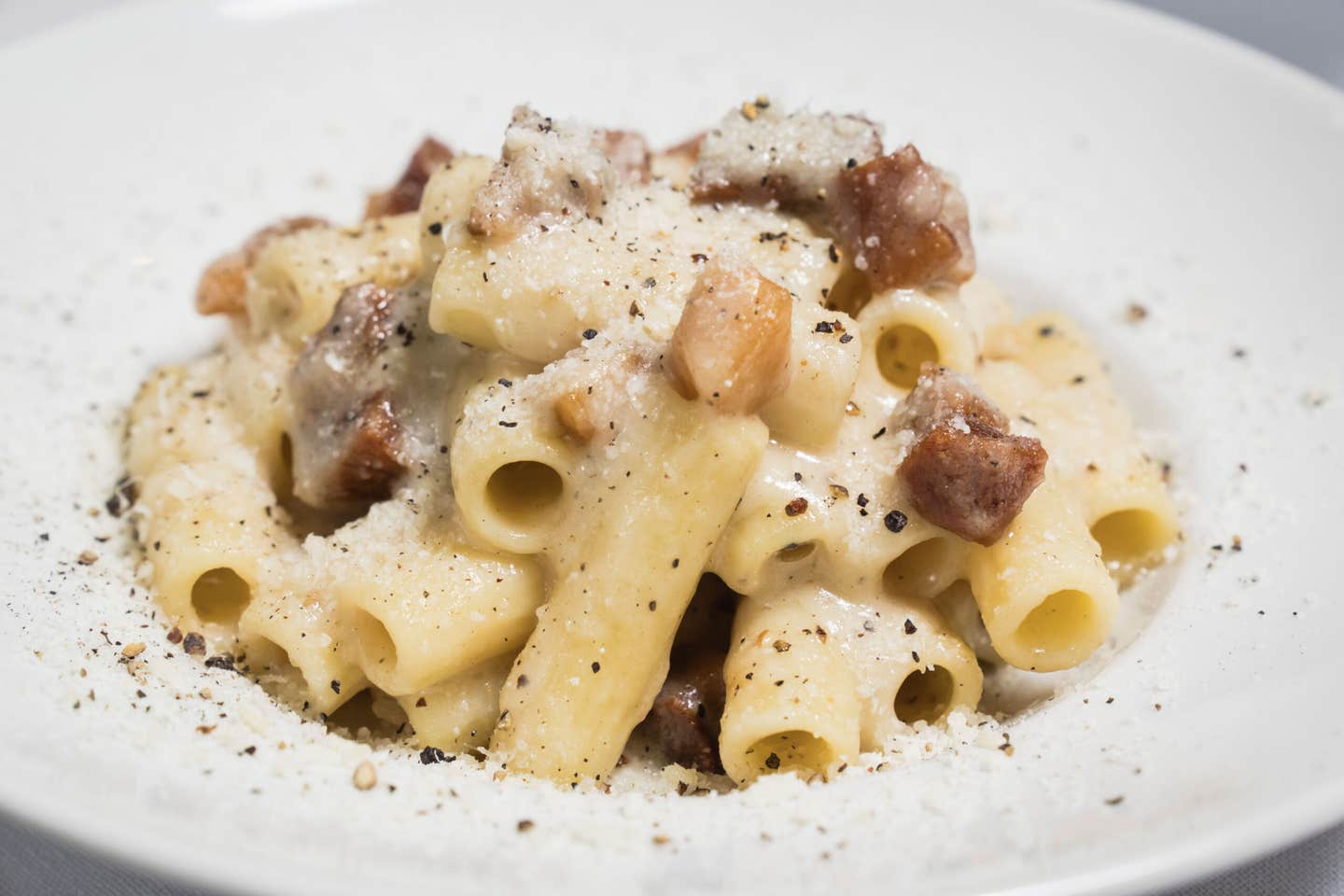
Rome's famous pasta dishes—gricia, carbonara, and amatriciana—have two key ingredients in common: savory, fatty guanciale (cured pork jowl) and punchy Pecorino Romano. (Just don’t call them the “three pastas of Rome”—that would be selling us short!) Happily, at gourmet deli-cum-wine bar Salumeria Roscioli, which just opened a New York City offshoot, you can try exceptional versions of all three. Their secret is artisanal cured pork jowl from Le Marche, which they cube and confit into crunchy yet tender morsels. Both the rigatoni alla gricia and spaghettoni alla carbonara share a trinity of freshly milled southeast Asian black pepper varieties, but only the latter is extra creamy with eggs. Not just any uova, mind you: We’re talking yolks from heritage-breed hens fed on goat’s milk that fetch $20 a dozen at the counter. Don’t sleep on the amatriciana, though; its tomato sauce is made with gorgeous, ultra-ripe fruit picked in Campania.
Bombolotti al Sugo di Coda at Cesare al Casaletto
Via del Casaletto 45
+39 06 536015
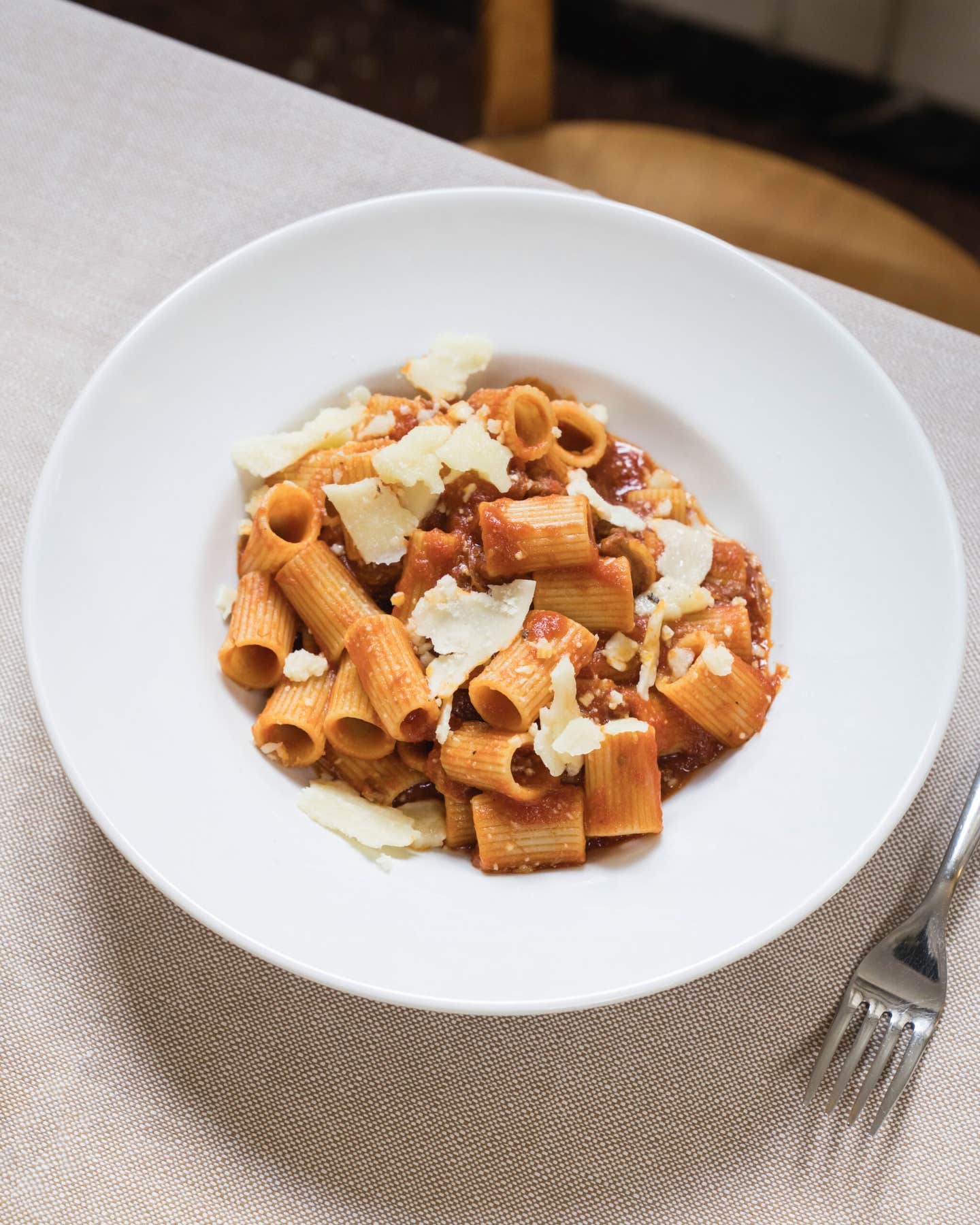
Coda alla vaccinara is a dish of braised oxtails simmered in a celery-rich tomato sauce for hours until falling off the bone. On their own, the oxtails are soulful and satisfying, but for me, it’s all about the leftover sauce infused with marrow and studded with rogue bits of melty meat. At Cesare al Casaletto, that deeply rich, brick-hued sauce is tossed with bombolotti—“half” rigatoni, also called mezze maniche—and topped with thick shavings of Pecorino Romano. The bits of meat settle pleasingly in the tubular architecture of the pasta, and the sheep’s milk cheese brings a piquant and savory note that ties it all together.
Fettuccine con Rigaglie di Pollo and Rigatoni con la Pajata at Armando al Pantheon
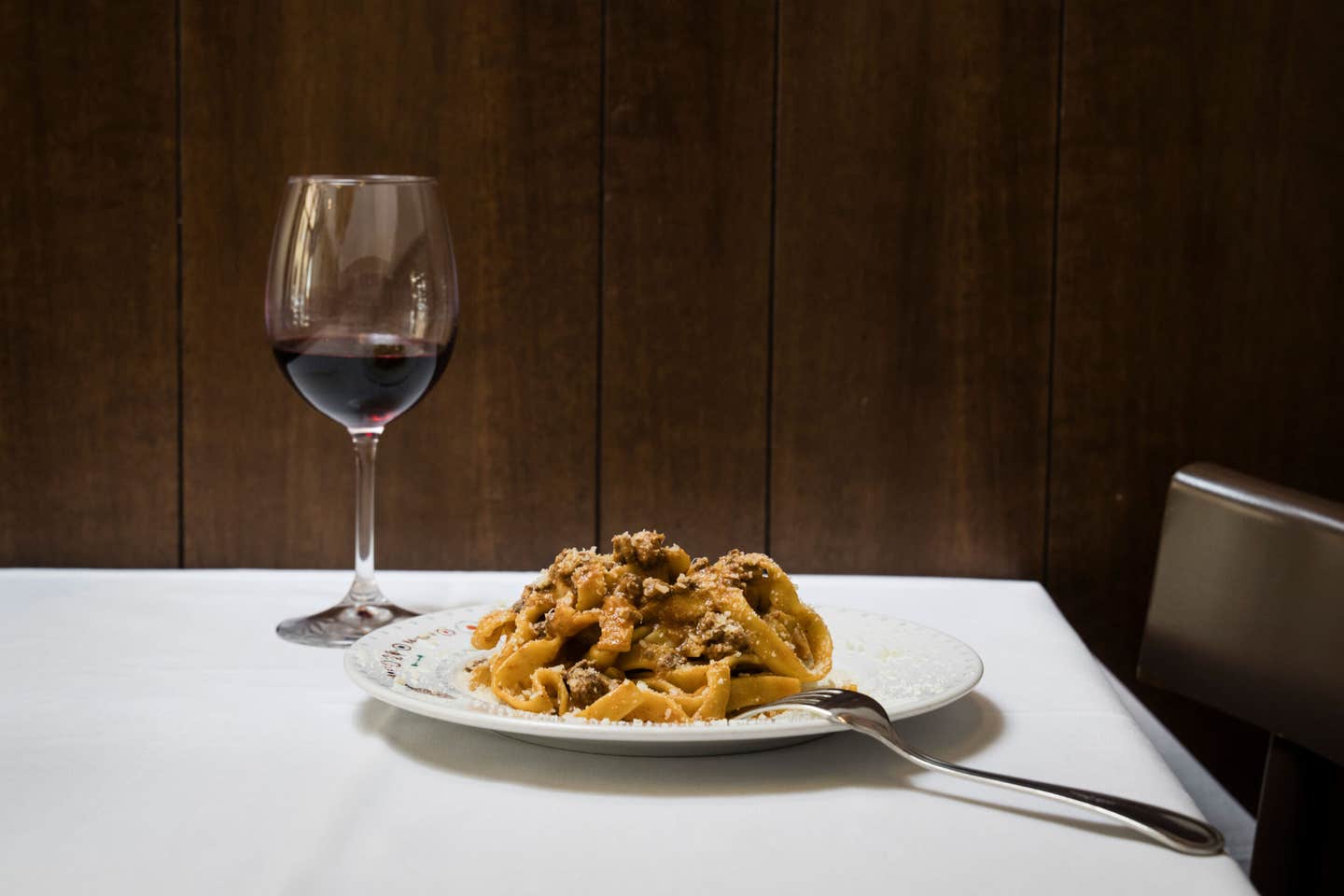
It’s hard to imagine chicken innards being a seasonal ingredient, but Romans traditionally celebrated festivals with poultry and all of its associated parts in the summer, especially around the mid-August Assumption holiday. For decades, local cooks have been simmering livers, gizzards, and hearts with tomato sauce and aromatics and tossing them with thick fettuccine for a celebratory, hearty meal. Nowadays the dish is served year round, and my favorite version comes from Armando al Pantheon. There, in the brown leather banquette-trimmed dining room, the Gargioli family takes pride in cooking each organ in stages to ensure they remain sweet and tender—and never funky. Staying with the offal theme, Armando also serves rigatoni con la pajata, pasta tossed with the intestines of milk-fed veal cooked in tomato sauce, albeit only in the spring and late summer when veal are suckling. If you’re still with me, you probably want to know that the mother’s milk cooks inside the intestine, becoming a sweetly lactic foil to the tangy tomato sauce.
Allesso di Bollito at Mordi e Vai
Mercato di Testaccio, Stall 15
Via Beniamino Franklin
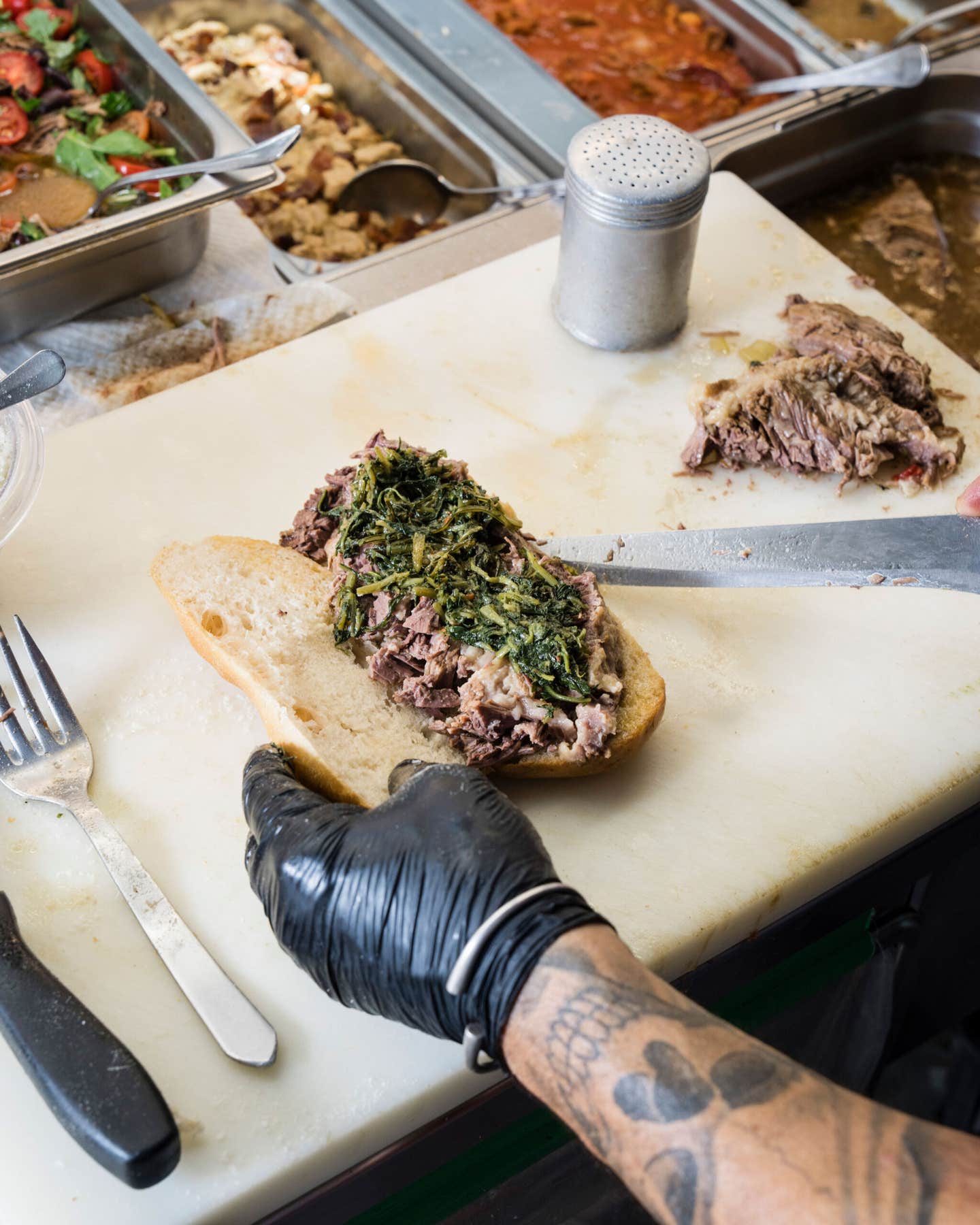
Allesso di bollito is another stewed beef stunner, but this Roman classic is made with brisket and flavored with celery and carrots. It was traditionally made by butchers, as brisket was once an off-cut that butchers took home at the end of the day. Alesso di bollito is the starting point for other Roman classics like bollito alla picchiapò (leftover bollito reheated in a mildly spicy tomato sauce) and polpette di bollito (leftover bollito shredded with breadcrumbs and aromatics, then breaded and fried). At Mordi e Vai, they make them all, calling their preparation allesso di scottona, signifying the meat is from a young, calfless cow. Each is used as a sandwich filling at their stall in Testaccio Market, not far from where the late founder Sergio Esposito worked at the city’s slaughterhouse from the age of 16.
Trippa alla Romana at Santo Palato
To make trippa alla romana, honeycomb tripe—one of several cow stomachs—is fastidiously cleaned, boiled until tender, cut into strips, then stewed in a mint-spiked tomato sauce before receiving a final dusting of grated Pecorino Romano. The dish is so integral to Roman cuisine that it has Roma in its name. Though typically prepared with a deep, concentrated sauce, chef Sarah Cicolini’s version at Santo Palato is pleasingly lighter, as the tomatoes are barely cooked, leaving the final product light and bright—not unlike the decor of the trattoria itself.
Coda alla Vaccinara at Tavernaccia Da Bruno
Via Giovanni da Castel Bolognese 63
+39 06 581 2792
There are two schools when it comes to coda alla vaccinara, or Roman braised oxtails. One is more flamboyant, its tomato sauce fragrant with cocoa powder, pine nuts, and raisins. The other is humbler and relies mainly on celery and tomatoes for flavor. Chef Giuseppe Ruzzettu of Tavernaccia Da Bruno favors the latter, and so do I. It comes as a secondo—just the meat, no garnish. The only addition it really requires is a napkin to tuck into your shirt as you excavate the bone’s crevices in hands-on enjoyment. Silverware, of course, is optional.
Misticanza at Piatto Romano
Via Giovanni Battista Bodoni 62
+39 06 6401 4447
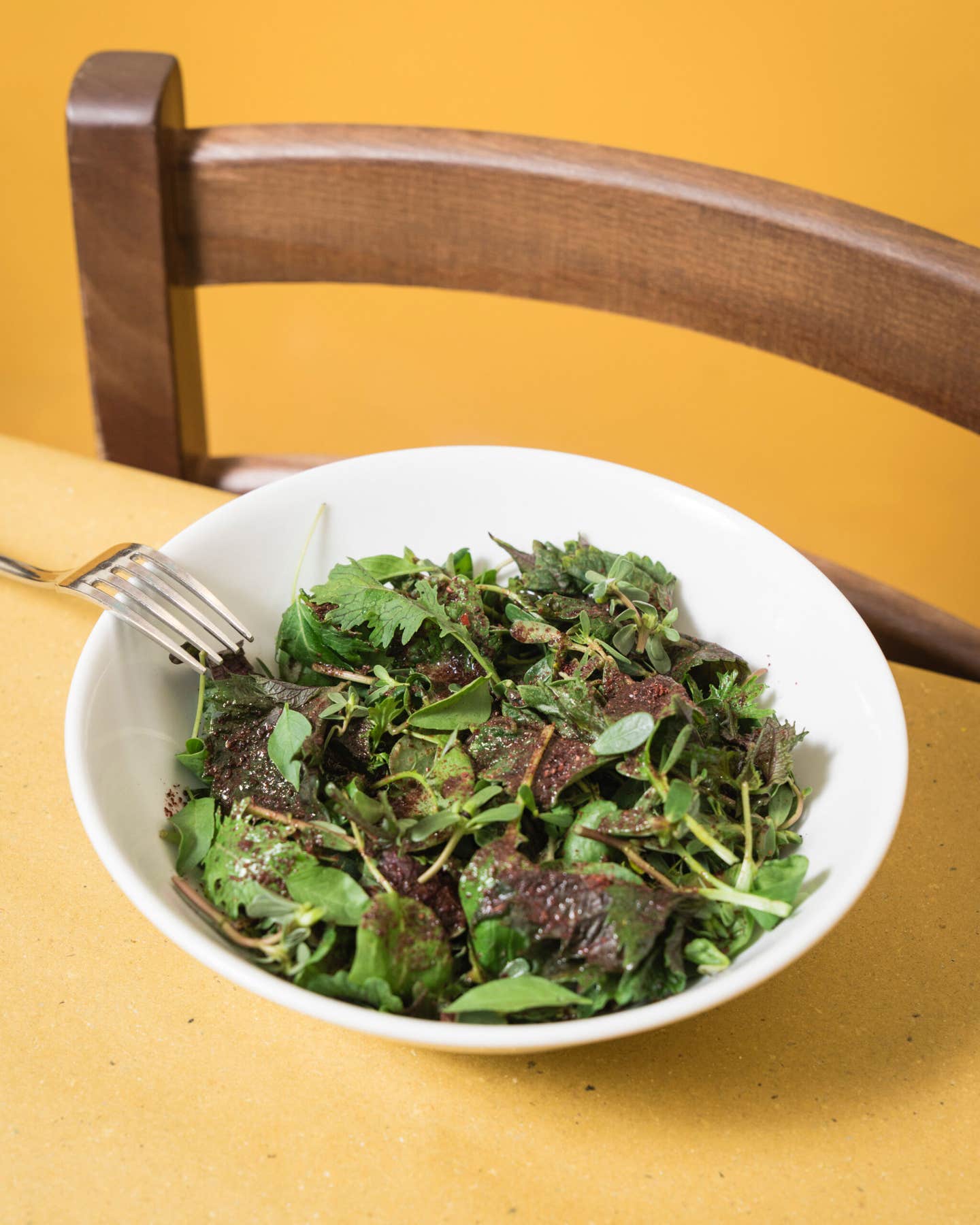
Stroll through any Roman market and you’re bound to find bins piled with misticanza, mixed wild greens. In Roman trattorie, more often than not, misticanza is prepared “ripassata in padella”: blanched, drained, then cooked in oil and garlic. At Piatto Romano, misticanza is served in all its raw glory as a salad, and a rather substantial one at that for a city unfamiliar with the salad-as-meal concept. Several varieties of chicory, poppy greens, and wild herbs are dressed with anchovy sauce and sumac (a bit of creative license), their herbal and bitter flavors standing out and standing up to the potent dressing. The greens are served as a starter or as a contorno (a vegetable side dish accompanying a main course) with a steak knife to cut all the hearty stems and leaves into bite-size pieces.
Torta Ricotta e Visciole at Boccione
Via del Portico d'Ottavia 1
+39 06 687 8637
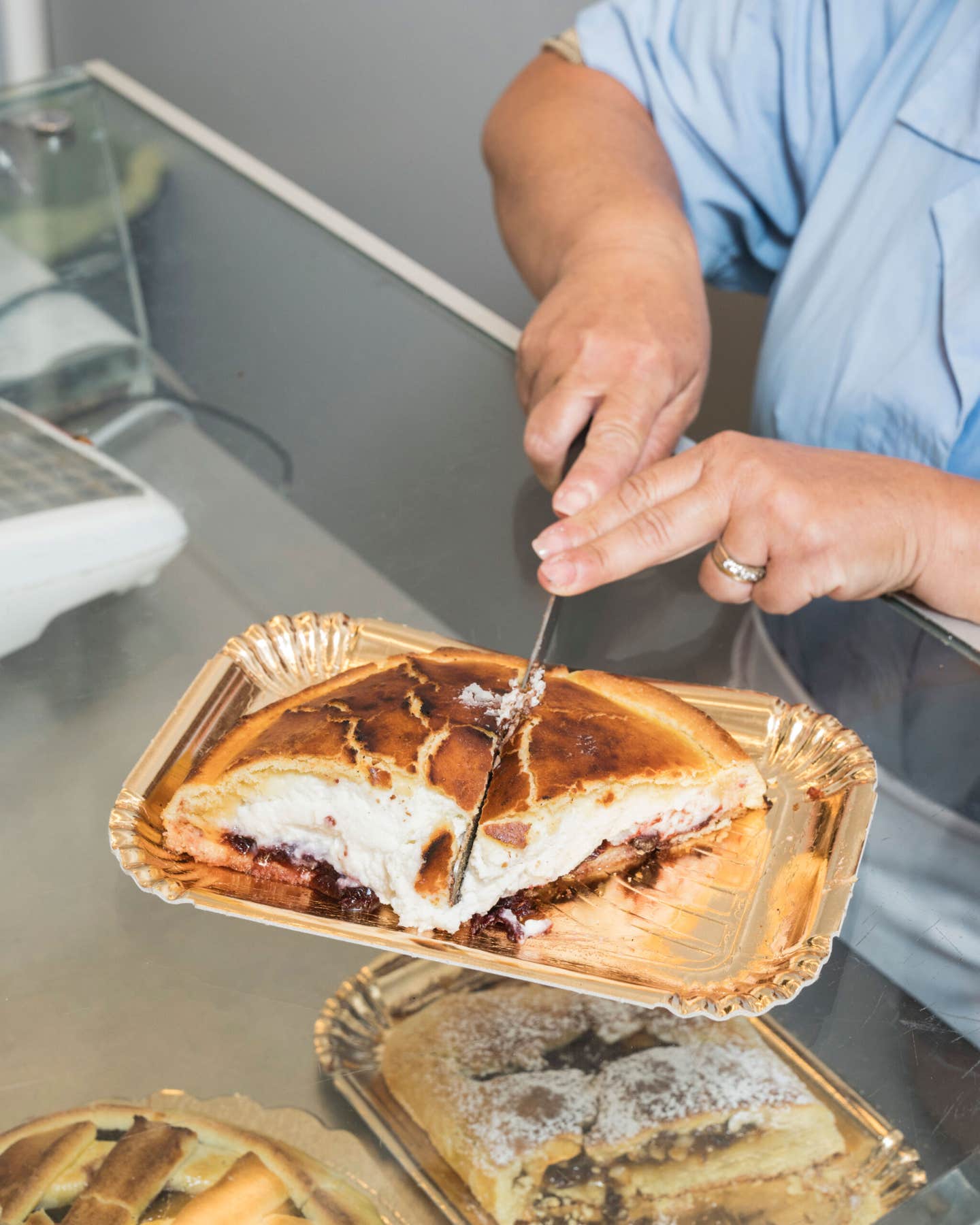
The glass display case at Boccione Forno del Ghetto, an unmarked yet world-renowned bakery on the main street in Rome’s Jewish Ghetto, is filled with round cakes with slightly charred tops and edges. The shortbread crust obscures the fillings: old-school ricotta e visciole (sour cherry) and new-school ricotta e cioccolato (chocolate). The combination of sweet ricotta and tart sour cherry jam, a ubiquitous combination at local bakeries, has Roman Jewish origins and reaches its fullest expression at this multi-generation kosher establishment. Buy the whole cake, or spring for a single slice, which you can savor gloriously yet un-glamorously sitting on the curb outside.
Keep Reading
Continue to Next Story
